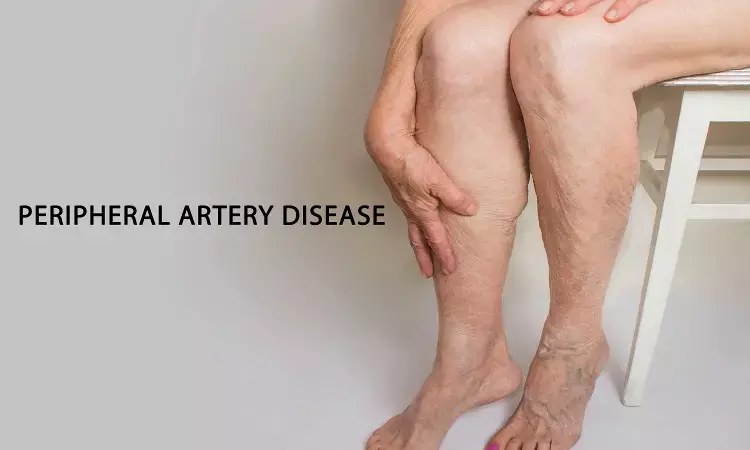- Home
- Medical news & Guidelines
- Anesthesiology
- Cardiology and CTVS
- Critical Care
- Dentistry
- Dermatology
- Diabetes and Endocrinology
- ENT
- Gastroenterology
- Medicine
- Nephrology
- Neurology
- Obstretics-Gynaecology
- Oncology
- Ophthalmology
- Orthopaedics
- Pediatrics-Neonatology
- Psychiatry
- Pulmonology
- Radiology
- Surgery
- Urology
- Laboratory Medicine
- Diet
- Nursing
- Paramedical
- Physiotherapy
- Health news
- Fact Check
- Bone Health Fact Check
- Brain Health Fact Check
- Cancer Related Fact Check
- Child Care Fact Check
- Dental and oral health fact check
- Diabetes and metabolic health fact check
- Diet and Nutrition Fact Check
- Eye and ENT Care Fact Check
- Fitness fact check
- Gut health fact check
- Heart health fact check
- Kidney health fact check
- Medical education fact check
- Men's health fact check
- Respiratory fact check
- Skin and hair care fact check
- Vaccine and Immunization fact check
- Women's health fact check
- AYUSH
- State News
- Andaman and Nicobar Islands
- Andhra Pradesh
- Arunachal Pradesh
- Assam
- Bihar
- Chandigarh
- Chattisgarh
- Dadra and Nagar Haveli
- Daman and Diu
- Delhi
- Goa
- Gujarat
- Haryana
- Himachal Pradesh
- Jammu & Kashmir
- Jharkhand
- Karnataka
- Kerala
- Ladakh
- Lakshadweep
- Madhya Pradesh
- Maharashtra
- Manipur
- Meghalaya
- Mizoram
- Nagaland
- Odisha
- Puducherry
- Punjab
- Rajasthan
- Sikkim
- Tamil Nadu
- Telangana
- Tripura
- Uttar Pradesh
- Uttrakhand
- West Bengal
- Medical Education
- Industry
Paclitaxel-coated devices do not increase mortality in PAD patients: NEJM

Sweden: The mortality risk was found to be same among PAD patients who received the treatment of paclitaxel-coated versus uncoated endovascular devices, according to a recent study in the New England Journal of Medicine.
An interim analysis of the SWEDEPAD trial found no death risk from the devices in patients with peripheral artery disease. The trial was paused after a meta-analysis detected a mortality hazard associated with paclitaxel-coated devices.
Peripheral artery disease (PAD) is a worldwide health problem characterized by reduced blood flow to the lower limbs due to obstructive atherosclerosis. Paclitaxel is an antiproliferative agent that is used for all approved drug-coated balloons and drug-coated stents for PAD interventions.
A recent meta-analysis showed a signal of an increased late risk of death associated with the use of paclitaxel-coated devices. This finding raised concerns and controversy regarding its long-term safety. To determine the same, Mårten Falkenberg, Institute of Clinical Sciences, Sahlgrenska Academy, Gothenburg University, Gothenburg, Sweden, and colleagues conducted an unplanned interim analysis of data from a multicenter, randomized, open-label, registry-based clinical trial.
At the time of the analysis, 2289 patients had been randomly assigned to treatment with drug-coated devices (the drug-coated–device group, 1149 patients) or treatment with uncoated devices (the uncoated-device group, 1140 patients). Randomization was stratified according to disease severity on the basis of whether patients had chronic limb-threatening ischemia (1480 patients) or intermittent claudication (809 patients). The single end point for this interim analysis was all-cause mortality.
No patients were lost to follow-up. Paclitaxel was used as the coating agent for all the drug-coated devices.
Key findings of the study include:
- During a mean follow-up of 2.49 years, 574 patients died, including 293 patients (25.5%) in the drug-coated–device group and 281 patients (24.6%) in the uncoated-device group (hazard ratio, 1.06; 95% confidence interval, 0.92 to 1.22).
- At 1 year, all-cause mortality was 10.2% (117 patients) in the drug coated–device group and 9.9% (113 patients) in the uncoated-device group.
- During the entire follow-up period, there was no significant difference in the incidence of death between the treatment groups among patients with chronic limb-threatening ischemia (33.4% [249 patients] in the drug-coated–device group and 33.1% [243 patients] in the uncoated-device group) or among those with intermittent claudication (10.9% [44 patients] and 9.4% [38 patients], respectively).
"In this randomized trial in which patients with peripheral artery disease received treatment with paclitaxel-coated or uncoated endovascular devices, the results of an unplanned interim analysis of all-cause mortality did not show a difference between the groups in the incidence of death during 1 to 4 years of follow-up," concluded the authors.
The study, "Mortality with Paclitaxel-Coated Devices in Peripheral Artery Disease," is published in the New England Journal of Medicine.
DOI: 10.1056/NEJMoa2005206
Dr Kamal Kant Kohli-MBBS, DTCD- a chest specialist with more than 30 years of practice and a flair for writing clinical articles, Dr Kamal Kant Kohli joined Medical Dialogues as a Chief Editor of Medical News. Besides writing articles, as an editor, he proofreads and verifies all the medical content published on Medical Dialogues including those coming from journals, studies,medical conferences,guidelines etc. Email: drkohli@medicaldialogues.in. Contact no. 011-43720751


